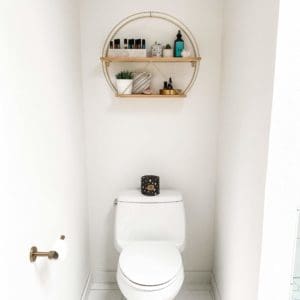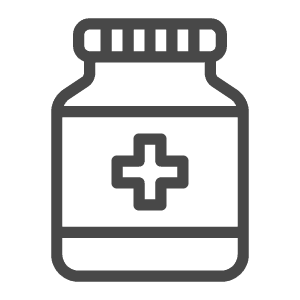According to a National Institutes of Health survey, over four million Americans suffer from frequent constipation. Although constipation is common in all age groups, it occurs more frequently in older adults. Fortunately, it’s possible to help the elderly effectively manage and prevent constipation. This article will tell you how.

What Is Constipation?
Constipation is defined as having fewer than three bowel movements per week, consisting of hard, dry stools that are difficult to pass. The consistency of a bowel movement is measured by the Bristol Stool Scale, where type 4 stool is often being considered ideal.
Constipation may result from irregular contractions in the colon or insufficient amounts of water in the intestines to move the stool into the lower bowel and out of the system. Any constipation that persists for more than three weeks is considered to be chronic constipation.
How common is constipation?
Constipation is a very common condition that affects people of all ages, however, it is particularly prevalent among the elderly. Statistics show that over 65% of people over age 65 experience constipation, and they are five times more likely than young people to develop problems related to constipation.
What are the risk factors?
Besides age, factors that may increase the risk of chronic constipation include:
- Being a woman
- Being dehydrated
- Eating a diet that is low in fiber
- Having a sedentary lifestyle
- Taking certain medications
- Having a mental health condition.

Is constipation serious?
Constipation is not a life-threatening condition, however, it should be taken seriously when it occurs in the elderly who are the main at-risk group for chronic constipation. If left untreated, constipation can have serious health consequences, for example:
- Severe abdominal pain
- Fecal or bowel incontinence or the inability to control bowel movements
- Intense straining that is typically accompanied by light bleeding during bowel movements, itching, swelling, and pain
- Hemorrhoids or swollen or damaged blood vessels in the anus
- Fecal impaction or stools that can’t be expelled
- Anal fissure or torn skin in the anus caused by a hard or large stool
- Rectal prolapse that occurs when a section of the intestine protrudes from the anus
- Urinary incontinence caused by weakened pelvic floor muscles due to constant straining
- Avoiding pain medication due to fear of constipation
- Increased irritability, agitation, and aggression in people with Alzheimer’s disease and other forms of dementia.
Symptoms of constipation
Other than fewer than three stools a week, symptoms of constipation in older adults include:
- Painful bowel movements
- Having hard or lumpy stools
- Straining to have bowel movements
- Bowel movements that feel incomplete
- The need for manual maneuvers to empty the bowels, for example, using hands to press on the abdomen
- Loss of appetite
- Gas pains or a bloated abdomen
- Fissures or tiny cracks in the anus due to straining
- Hemorrhoids or swollen tissue around the anus
- Blood streaks in the stool from tiny fissures or hemorrhoids
- Increased confusion or somnolence in people with dementia.
What Causes Constipation in the Elderly?
There are many reasons why constipation affects the elderly. Here are the most common ones:
- Slowing or weakening of the digestive system as a result of aging
- Insufficient water intake
- Poor eating habits
- Not eating enough
- Diet low in fibers
- Lack of exercise
- Urinary incontinence
- Lactose intolerance
- Metabolic disorders
- Prolonged bed rest
- Overuse of laxatives or enemas
- Irritable bowel syndrome
- Scarring, tumors, and other digestive tract conditions
- Diseases such as multiple sclerosis, lupus, scleroderma, underactive or overactive thyroid, and diabetes
- Certain medications.
In most cases, constipation is multifactorial, in other words, it is due to multiple causes instead of a single risk factor.

Medications that may cause constipation
Some commonly used medications can worsen or cause severe constipation in older adults, for example:
- Antihistamines
- Medications for overactive bladder
- Muscle relaxants
- Anticonvulsants
- Anti-nausea medications
- Opiate painkillers, such as codeine, morphine, and oxycodone
- Diuretics
- Calcium supplementations
- Iron supplementations
- Narcotics
- Antipsychotics or tricyclic antidepressants
- Calcium channel blockers
- Nonsteroidal anti-inflammatory agents
- High blood pressure medications
- Antacids that contain aluminum and calcium.
Types of Constipation Among Elderly
There are two main types of constipation: primary and secondary. While primary constipation has no clear cause, secondary constipation occurs as a result of lifestyle factors or an underlying illness.
Primary constipations are classified into three categories: normal transit constipation, slow-transit constipation, and outlet constipation, also known as pelvic floor dysfunction.
Normal transit constipation
Normal transit constipation is the most common subtype of primary constipation. It occurs when, despite the stool passing through the colon at a normal rate, the patient has difficulty evacuating the bowels. Normal transit constipation is usually associated with irritable bowel syndrome.
Slow-transit constipation
Slow-transit constipation is seen more commonly among women than in men. It is characterized by infrequent bowel movements, limited urgency, and straining to defecate.
Outlet constipation (pelvic floor dysfunction)
Outlet constipation is due to a problem in the muscles of the pelvic floor or around the anus. People who suffer from this condition have a poor ability to coordinate muscles during defecation, which causes a feeling of incomplete evacuation. Pelvic floor dysfunction typically overlaps with slow transit colon.
Diagnosis of Constipation in the Elderly
Diagnosing constipation in the elderly starts with a detailed exam. The physician will first check whether constipation is due to medications, lack of physical activity, or dehydration. Subsequently, the physician will evaluate the patient for potential underlying conditions at a new onset or worsening of constipation, blood in the stools, unexplained weight loss, fever, nausea and vomiting, loss of appetite, family history of inflammatory bowel disease or colon cancer in older adults.
Some medical conditions that may cause constipation include:
- Heart diseases such as heart failure
- Diabetes mellitus
- Hypothyroidism or underactive thyroid
- Hypercalcemia or increased blood calcium levels
- Hypokalemia or low levels of potassium in the blood
- Hypomagnesemia or increased blood magnesium
- Hyperparathyroidism or overactive parathyroid glands
- Muscle and nerve disorders like dermatomyositis, systemic sclerosis, autonomic neuropathy, Parkinson’s disease, and spinal cord lesion
- Diseases of the gastrointestinal system, for example, irritable bowel disease, rectal prolapse, anal fissure, diverticular disease, strictures, or megacolon.
Exams that may be necessary to diagnose these conditions include:
- A full blood count to exclude anemia and a thyroid function
- Tests to exclude hypothyroidism
- Imaging studies to rule out obstruction leading to constipation
- Imaging studies with air contrast barium enema to help detect obstructing colon cancer, intermittent volvulus, or colonic stricture
- Dynamic pelvic magnetic resonance imaging to assess the anatomy during defecation and identify possible pelvic floor dysfunction.
- A range of other tests, such as lower gastrointestinal endoscopy, anorectal manometry, electromyography, and defecography.
Management of Constipation in the Elderly
Chronic constipation in the elderly can be successfully managed through lifestyle changes and/or medications that allow restoring normal bowel habits with minimal side effects.
Lifestyle changes
Constipation in the elderly can be prevented and treated by introducing a number of simple lifestyle changes, such as:
- Eating a healthy, balanced diet
- Cutting down on high-fat foods and avoiding refined sugars
- Eating high-fiber foods, for example:
- Whole grains
- Vegetables
- Nuts
- Fresh or dried fruits
- Whole-grain cereals
- High-fiber bran flakes
- Taking fiber supplements, methylcellulose, polycarbophil, or bran
- Drinking enough fluids, including at least eight 8-ounce glasses of water daily
- Not drinking too much milk as it can lead to constipation
- Reducing the consumption of alcohol
- Limiting caffeinated drinks, such as sodas, coffee, and tea, that tend to be dehydrating
- Bowel training after waking up and after meals to avoid a build up of stools and constipation
- Getting regular exercise and at least 30 minutes of physical activity per day
- Biofeedback, a behavioral approach that can be used by some people with severe chronic constipation
- Replacing prescription medications that may be causing constipation with different drugs.
Constipation medications
Medications that are typically used for treating constipation include over-the-counter medications such as laxatives and enemas, as well as prescription medications.
Laxatives
Laxatives contain chemicals that can loosen stools and increase bowel movements. There are several types of laxatives:
- Osmotic laxatives (lactulose, mannitol, polyethylene glycol). These medications draw water from the rest of the body into the bowel to soften poo.
- Stimulant laxatives (senna, bisacodyl, sodium picosulfate). They stimulate the gut-lining muscles, helping them to move poo.
- Bulk laxatives (methylcellulose, Fybogel). This type of laxative works by increasing the weight of poo to stimulate the bowel.

Enemas
An enema is an injection of fluid into the lower bowel to cleanse or stimulate the emptying of the bowel. The most commonly available forms are saline enemas that work by increasing water in the intestine to hydrate and soften the stool. However, experts recommend that older adults use a warm tap water enema or a mineral oil enema instead of saline enemas to provide relief from occasional constipation.
Prescription medications
Prescription medications are typically recommended for people with chronic constipation and irritable bowel syndrome with constipation (IBS-C). Unlike the over-the-counter medications, these drugs don’t provide immediate relief, but help gradually increase the number of weekly bowel movements.
The prescription constipation medications available in the United States are:
- Linaclotide
- Lubiprostone
- Methylnaltrexone
- Naloxegol
- Naldemedine
- Plecanatide.
Share This Article